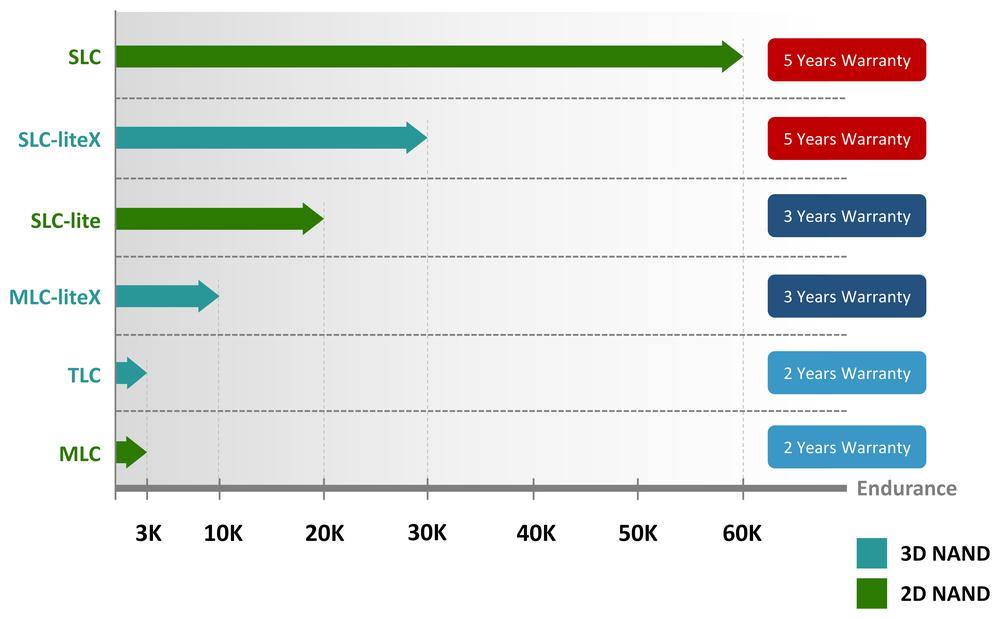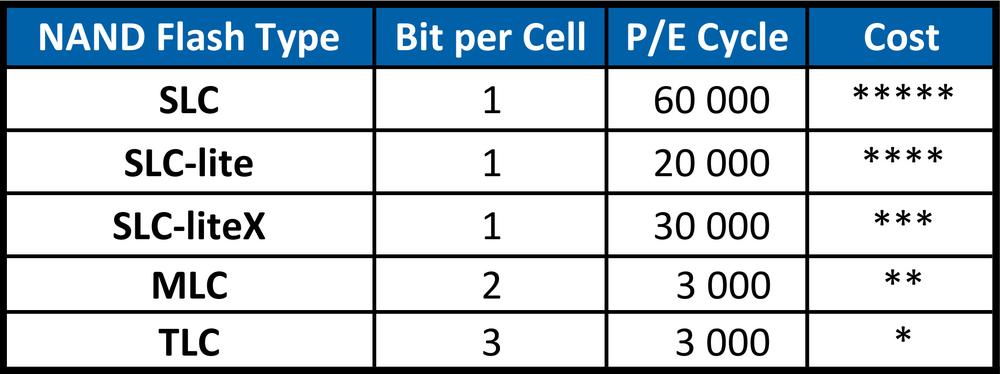SLC-liteX and MLC-liteX
Apacer developed SLC-lite technology which uses 2D MLC flash that can store 2 bits/cell.
When programming only one of the two bits, the least significant bit (LSB), threshold voltage distribution behaves similarly to the SLC flash memory cell. The program/erase cycle (P/E) count is then greatly increased, reaching 20,000. By comparison, the standard 2D MLC allows 3,000 P/E cycles.
Apacer used a similar concept for 3D TLC NAND Flash that can store 3 bits/cell. Programming only one of three bits (SLC-liteX) allows the increase of number of P/E cycles to 30 000. If two bits are programmed (MLC-liteX), P/E cycle count reaches 10 000.
The SLC-liteX series products are either covered by a 5-year warranty or the period ending on the date when the SSD has exceeded 30 000 Erase Count, which is indicated by Apacer’s SMART software, whichever occurs first.
For an overview of the warranty period for Apacer SSDs, please see the following figure.
For full warranty statement, please visit the Apacer website.
The first samples of SLC-liteX products below will be available at the beginning of the year 2020. If you are interested in samples for testing for a discount price, please contact us at info@soselectronic.com
The good news is that the price of SLC-liteX products should be lower than the price of similar SLC-lite products.
3D NAND flash for Industrial Temperature Range -40 to 85°C
Major flash memory chips manufacturers like Kioxia (formerly Toshiba Memory) are currently able to produce 3D NAND flash chips with endurance of 3 000 P/E cycles in industrial temperature range -40 to 85°C. This allows Apacer to launch new SSD series SV-250 a SV-170 and CV110-MSD a CV110-SD memory cards series.
Faster MicroSD and SD Cards
Apacer introduced new H2-M series of industrial MLC microSD and SD memory cards. They are available in 4 to 32GB capacity and for standard temperature range
-25 to 85 °C or industrial temperature range -40 to 85°C. Cards employ page mapping FTL (flash translation layer) which allowed fulfilling the application performance Class 1 (A1) requirements (IOPS read > 1500, IOPS write > 500) for cards with capacity 8GB and higher.
Series also uses Read Disturb Management that increases reliability for applications that constantly read data from memory card, like video playback in loop for example. For more details how this technology works, please see the article Apacer Brings New Technologies to SSD.
For further information about Apacer products, please do not hesitate to contact us at apacer@soselectronic.com
Do you like our articles? Do not miss any of them! You do not have to worry about anything, we will arrange delivery to you.








